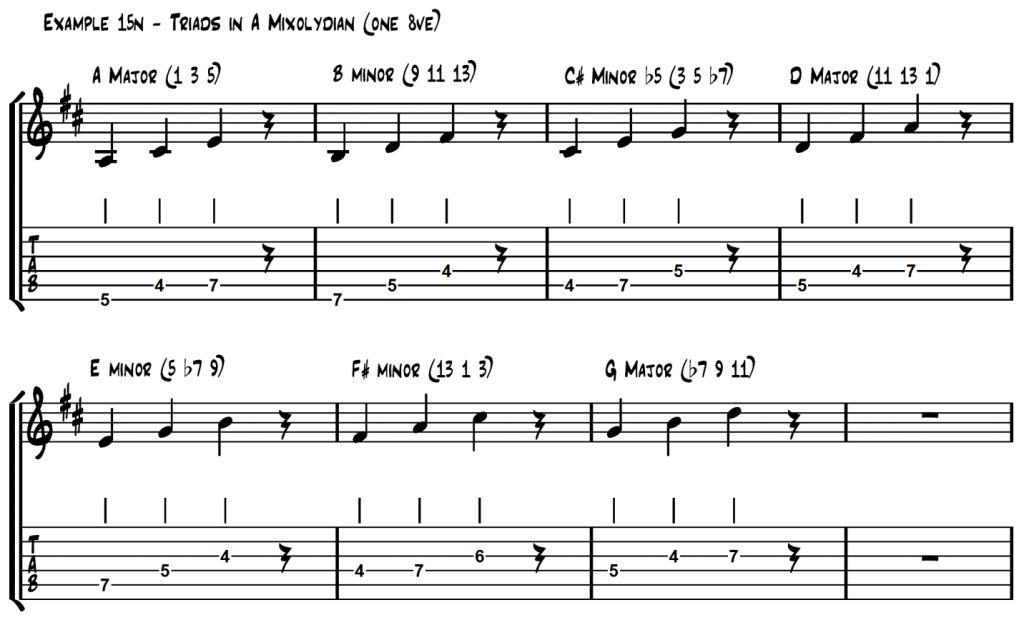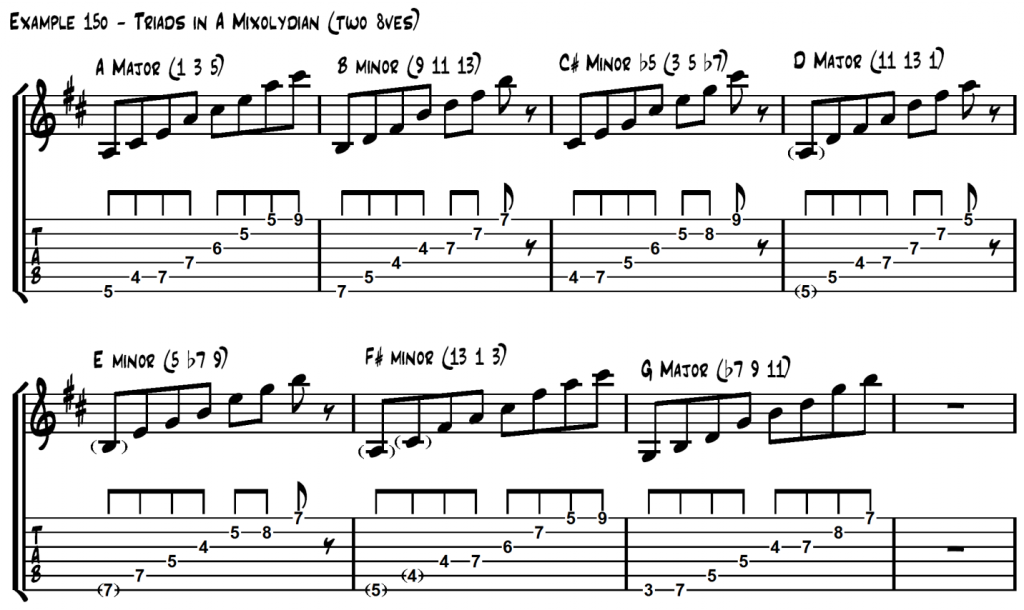Study the Mixolydian Mode Part 2
Licks, Intervals and Triads
This Mixolydian Mode lesson is part 2 of a series of 3. Check out the first lesson here to make sure you’re up to speed.
Mixolydian is more often than not combined with the minor pentatonic and blues scales to give a slightly happier, major lift to a blues based solo. This is reflected in many of the licks in this section. They are all included as audio examples and the Mixolydian backing track has kindly been provided by Quist.
Audio Examples:





Here’s the Mixolydian mode backing track for you to practice with:
Soloing Approaches to the Mixolydian Mode
The following pages analyse the approaches we can use to dissect the A Mixolydian mode. Each approach, (intervals, triads etc) represents one ‘level’ of depth we can investigate to create melodic ideas. Think of them as different layers of increasing complexity. All of the ideas can be freely combined in order to make a solo. Try each idea over a slow Mixolydian backing track to get a feel for the texture of each melodic concept.
2-Note Intervals
You should be comfortable with all of these intervallic approaches to playing Mixolydian
3-Note Triads





Once again, we can take the approach of singling out specific triads that are formed on each degree of the Mixolydian mode. The triads that are formed from each scale tone are:
| Scale Degree | 3 Note Triads Built in Mixolydian | Intervals Against Tonic |
| 1 | I major | 1, 3, 5 |
| 2 | ii minor | 9, 11, 13 |
| 3 | iii minor b5 | 3, 5, b7 |
| 4 | IV major | 11, 13, 1 |
| 5 | v minor | 5, b7, 9 |
| 6 | vi minor | 13, 1, 3 |
| b7 | bVII major | b7, 9, 11 |
and they are played in the following manner in one and two octaves:


Playing a minor triad on the 5th degree of the Mixolydian mode is a great sound. (E minor over A Mixolydian) (5, b7, 9).
Be sure to listen to all these examples in the audio examples at the top of the page, and try creating your own ideas by isolating just one or two triads to experiment with. By limiting your note choice in this way you can get very creative and break up the monotomy of scale playing.
Check out the 3rd and final part of our study on The Mixolydian Mode here.
“The artists you work with, and the quality of your work speaks for itself.”
Tommy Emmanuel
© Copyright Fundamental Changes Ltd 2025
No.6 The Pound, Ampney Crucis, England, GL7 5SA
